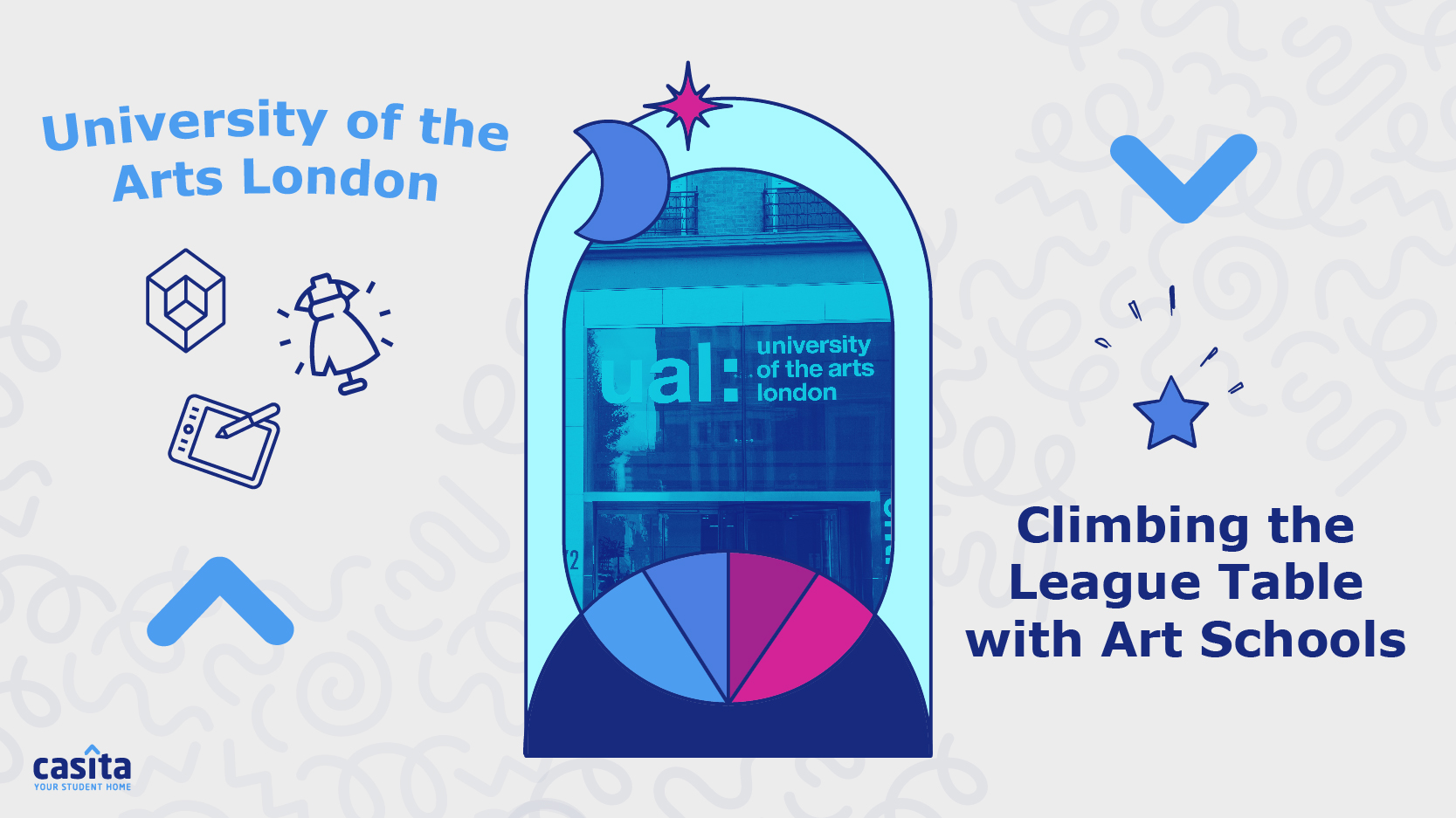University of the Arts London Climbing the League Table with Art Schools
By Hagar Samir
|
12 September, 2023
Share

Updated at:
Published at:
By Hagar Samir
University of the Arts London Climbing the League Table with Art Schools
By Hagar Samir
|
12 September, 2023
Share

The University of the Arts London combines some of the most famous and well-known art schools in the world in a creative champion that is rising in ranking and popularity.
Specialising in the creative arts, the university is recruiting its students, mostly from overseas, despite this being seemingly annoying to the science-based government ministers whose main focus is not international students.
However, the vice-chancellor of the University of the Arts London, James Purnell, thinks that the solution is to make use of the university’s powers to stay away from political issues.
He states, “We need to have our destiny in our own hands. Obviously, we think about government policy, but in the university sector, if you’re able to have a strong reputation and recruit strongly, then what the government does is important, but it doesn’t stop you from getting on with your mission,”
Some of these colleges include Central Saint Martins, Chelsea College of Arts, the London College of Fashion, Camberwell College of Arts, London College of Communication, and Wimbledon College of Arts. These colleges were chosen by a former Labour MP and culture secretary in Gordon Brown’s cabinet. These colleges lead the most creative art sectors.
UAL has thrived, and it has grown to more than 21,000 undergraduate and postgraduate students from 130 countries across its six colleges. This has happened while other creative and visual arts institutions had problems in a political manner, which has, in turn, cut specialist funding and prioritised STEM subjects and graduate employment.
At the same time, the university’s name and rank have risen in the Guardian University Guide, where it went from being in 45th place four years ago to being in 15th place, which is the highest position the university has ever reached. It has now risen above the University of Bristol, the University of Southampton, and King’s College London, despite being Russell Group lead.
The director of Intelligent Metrix, Matt Hiely-Rayner, states that the university’s ranking has been helped due to several reasons, one of which being the increase in student entry grades as well as lower drop-out rates than in previous years.
The university’s focus on creativity has been rewarded with top rankings in both interior design and animation and games design; this is in addition to exceptional performances in fine arts, textiles, and design, followed by graphic design and product design, with its marketing and public relations course.
Because of the new campus in Stratford, east London, for the London College of Fashion, questions are raised about how the university can afford all of that, as the domestic tuition fees have been frozen since 2016.
Purnell remarks that there are two factors, saying, “We created a financial formula which basically hypothecated money to teaching and learning, so we’ve increased that as a proportion of our income every year. It’s been partly about tough discipline and where we focus our money.”
“The other factor is because we have significant international recruitment, we have a higher unit of resource. International students pay more than home students, so on average, we have also been able to have more money in absolute terms and put more of that money into teaching and learning.”
On the subject of politicians talking about international students taking UK students’ places from them, Purnell comments, “I find it very frustrating because exactly the opposite is true. International students are actually making the current system possible.”
“At UAL, the cost of delivery for a course is about £12,000, so we make a financial loss of £3000 on every UK student, and we’re able to offer the education that we do because international students pay more. They’re making it possible for far more people to get to go to university.”
“Essentially, international students are paying for quite a lot of the cost of our university system, which would cost British taxpayers more and British graduates more if they weren’t there.”
Prof Roni Brown, the university’s deputy vice-chancellor for education, adds, “The university has used its position to support as many students as possible through the cost of living crisis, through increased hardship funds and bursaries and tackling the high cost of materials for art students.”
“We have a very competitive intake; we now have 60,000 applications for just over 9,000 places, so that competition is increasing alongside the hard work we are doing to improve student experience, opportunities and success,”
“We offer a unique model of education at UAL through our curriculum. We believe it supports creativity that leads to innovation and a better world. There is good growth and good opportunities here for our students; that’s what we want to emphasise.”
